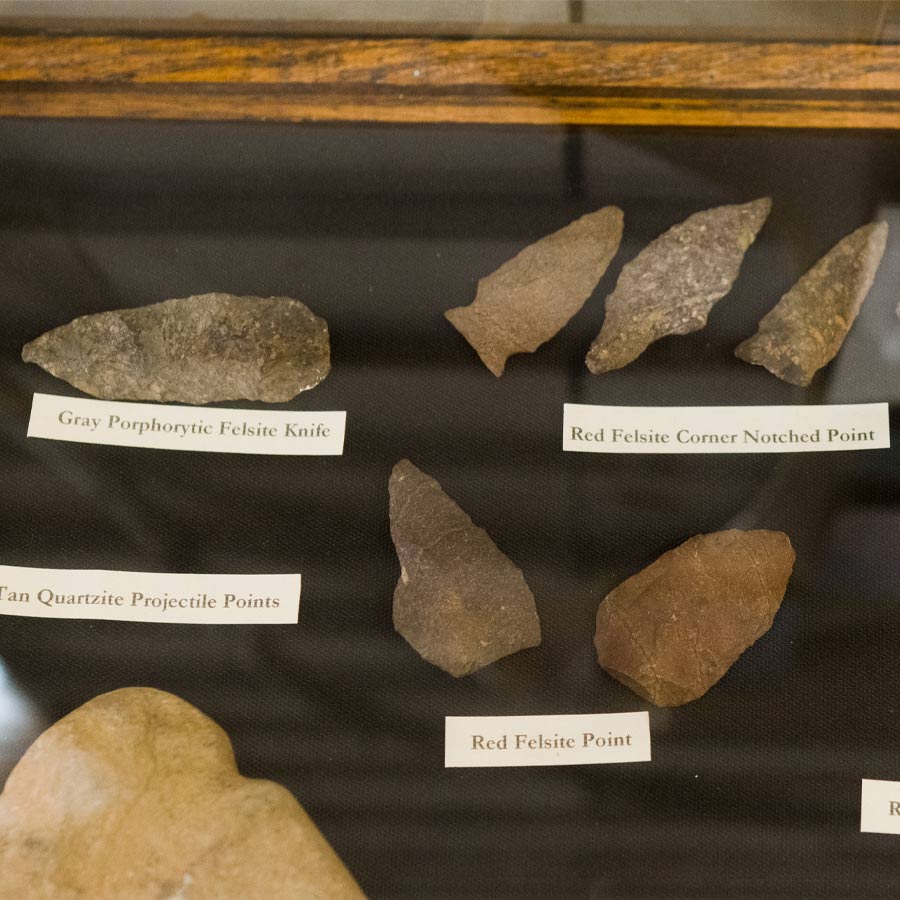Wampanoag Exhibit
Attleboro's First Craftsmen
Watch Our Wampanoag Exhibit Video
What Will You See at the Exhibit?
Our Wampanoag exhibit showcases the work of Attleboro’s first craftsmen from up to 8,000 years ago. Our display case contains a number of artifacts, including knives, scrapers, points, chisels, axe heads, hammer stones, and more. Above the display case, you’ll find information about local archaeological digs that led to the discovery of many of these items, as well as a history and overview of the Wampanoag people and other indigenous groups in New England.
A Brief History of the Wampanoag People in the Attleboro Area
Wampanoags lived in Attleboro for thousands of years.
Attleboro’s first craftsmen were not jewelers or textile workers—they were the Wampanoags. For possibly 5,000 years or more they lived in the Attleboro area, leaving behind a legacy etched in stone. The artifacts displayed here in our Wampanoag exhibit showcase their detailed work, found by collectors who cultivated fields and gardens in Attleboro for more than four decades. Much of what we know about Attleboro’s first craftsmen comes from these collectors, who made sure to carefully record where each artifact was found.
What else do we know about the Wampanoags who lived in this area? Their name means “Eastern People” or “People of the Dawn.” As a semi-sedentary society, the Wampanoags made seasonal migrations from the coast to the inner woodlands. The Wampanoags were a horticultural people, growing staple crops of corn, beans, and squash. This was supplemented by fishing, and hunting of wild game including deer, turkey, and rabbit.
The Wampanoags did not live in tee-pees. Instead, they lived in villages of small round houses called wetus or wigwams. In the winter, large families would live in longhouses. Both men and women took part in wigwam construction. The men were responsible for the actual construction of the homes and were the ones to harvest bark for the covering and sapling poles for the frame. Women gathered cattails and bulrushes, weaving them into mats used to cover, line, and insulate their homes.
In Wampanoag culture, women’s work included gardening, cooking, tanning hides, sewing, weaving, head-making, and basket-making.

Fast Fact #78
Did you know? Wampanoag artifacts found in the Attleboro area date back as far as 8,000 years.
See Us In Person
Plan Your Visit
Museum Hours
Thursday & Friday: 10AM - 4PM
Saturday: 10AM - 2PM
Visit for Free
Donations help keep our museum running, but visiting is free.
Guided Tours
Adults: $4, Children $3.
Have a Story You Want to Share?
We’d love to hear your story about Balfour, whether it’s a family anecdote, possession, or something else. Please let us know if we can tell your story online or in the museum.

